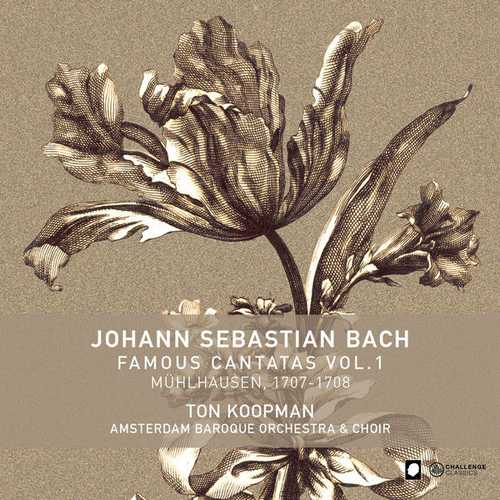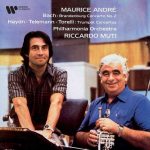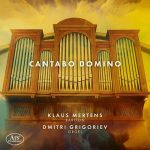

Composer: Johann Sebastian Bach
Performer: Amsterdam Baroque Choir
Orchestra: Amsterdam Baroque Orchestra
Conductor: Ton Koopman
Format: FLAC (tracks)
Label: Challenge Classics
Catalogue: CC72897
Release: 2021
Size: 350 MB
Recovery: +3%
Scan: cover
Christ lag in Todesbanden BWV 4
01. Sinfonia
02. Versus I – Chorus: Christ lag in Todesbanden
03. Versus II – Duet: Den Tod niemand zwingen kunnt
04. Versus III – Jesus Christus, Gottes Sohn (tenor)
05. Versus IV – Chorus: Es war ein wunderlicher Krieg
06. Versus V – Hier ist das rechte Osterlamm (bass)
07. Versus VI – Duet: So feiern wir das hohe Fest
08. Versus VII Choral: Wir essen und leben wohl (chorus)
Gott ist mein König BWV 71
09. Gott ist mein konig (Chorus)
10. Chorale Aria: Ich bin nun achzig Jahr (Tenor, Soprano)
11. Dein Alter sei wie deine Jugend (Chorus)
12. Arioso: Tag und Nacht ist dein (Bass)
13. Aria: Durch machtige Kraft (Alto)
14. Du wollest dem Feinde nicht geben (Chorus)
15. Das neue Regiment (Chorus)
Aus der Tiefe rufe ich, Herr, zu dir BWV 131
16. Sinfonia: Aus der Tiefe rufe ich
17. Aria: So du willst (Bass, Soprano)
18. Ich harre des Herrn (Chorus)
19. Aria: Meine Seele wartet auf den Derrn (Tenor, Alto)
20. Israel, hoffe auf den Herrn (Chorus)
Gottes Zeit ist die allerbeste Zeit (Actus tragicus) BWV 106
21. Sonatina
22. a. Gottes Zeit ist die allerbeste Zeit (Chorus) b. Arioso: Ach, Herr, lehre uns bedenken (Tenor) c. Arioso: Bestelle dein Haus (Bass)
23. a. Aria: In deine Hande befehle ich meinen Geist (Alto) b. Chorale: Heute wirst du mit mir (Alto, Bass)
24. Glorie, Lob, Ehr und Herrlichkeit (Chorus)
The first volume in a series devoted to Bach’s famous Cantatas with Ton Koopman and the Amsterdam Baroque Orchestra & Choir. The project is chronologically structured, so this first volume includes Cantatas composed at Mulhausen in the years 1707 and 1708. It contains four great and well-known masterpieces which convey the mastery and maturity of the young Bach, aged 22 at that time.
Bach’s sacred music written before he went to Leipzig, including all the works from the Weimar period, are often lumped together as “early” cantatas. This is misleading and ultimately inaccurate, since Bach was already 38 years old when he moved from his post as Kapellmeister at Kothen in 1723 to take up his duties as Kantor at the Thomaskirche in Leipzig. In fact most of Bach’s church cantatas date from the Leipzig years, as does the consolidation of the stylistic, structural and technical features of his vocal works, but even the repertoire composed before 1714 can hardly be termed “early”. The works composed at Mühlhausen, demonstrating a striking sureness of touch in their conception, placed the 22-year-old among the finest contemporary cantata composers. Bach’s earliest church cantatas are still clearly marked by 17th-century traditions. As well as the influences of older members of the Bach family, those of Buxtehude and Pachelbel the Elder, and Italian and French masters are evident, technically, structurally and stylistically.
A particularly characteristic feature of the pre-Leipzig cantatas is Bach’s exceptional delight in experimental and complex handling of an extremely wide range of instruments, with refined sound effects (such as the use of the bassoon) and poly- and homophonic settings and forms.



